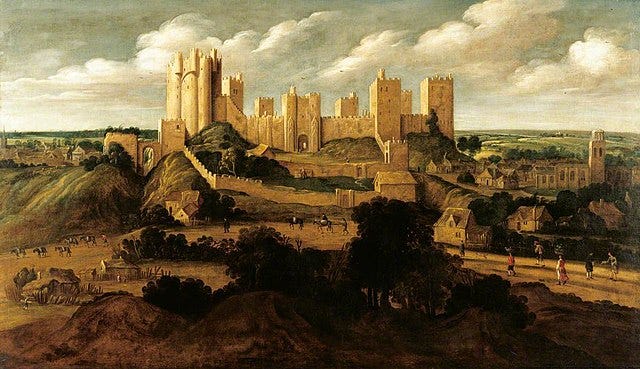"The Ghosts of Pontefract Castle" by Simon Clark
Cemetery Dance's A Halloween Short Story ebook series
Readers unfamiliar with "The Ghosts of Pontefract Castle" by Simon Clark may prefer to read these notes only after reading the story.
....“The castle is a gathering point for ghosts. The church in town is as well. I can’t work out if there are any rules as to how ghosts work. There doesn’t seem to be any logic to them, because even though it’s like they want to be together, they don’t seem to be able to speak to each other.And ghosts aren’t fixed in just one place in time. I realized that when I was ill. If each year in time is like one page in a book, then a ghost is like a pin that’s been pushed all the way through the pages. A ghost can be in different times at the same time. Do you know what I’m saying?”
One of his greatest strengths as a writer is Simon Clark's artistic unpredictability. "Gerassimos Flamotas: A Day in the Life" was a macabre and heart-breaking horror story of splatterpunkish wit and intensity. "Live Wire" was a weird melodrama that followed the line of least solipsism and vanished into its own cloaca.
"The Ghosts of Pontefract Castle" is traditional spectral fiction, wrought flawlessly and worth multiple rereadings.
It begins with an echo of Dickens' "The Signalman":
“Hello?”
Mark called up to the boy who stood on top of a ruined fragment of castle wall. The boy was more than adozen feet above the ground and swayed as he gazed out over North Bailygate, Skinner Lane and Denwell Terrace.
“I said, ‘Hello.’” Mark watched as the boy slowly rocked backwards and forwards like he was drunk or something. Mark went cold inside. He’s going to fall, he told himself. He’s going to fall and I’ll see his head get splattered all over the ground.
The October breeze made him even colder in his Halloween fancy dress costume. Shivers ran up his back.
Mark scanned the grounds of Pontefract Castle. The area consisted of a large central lawn surrounded by trees, and mounds covered by grass, and chunks of old masonry. It was getting dark and the place appeared deserted apart from him, in his monkey costume, and the boy, who looked about twelve years old, which was the same age as Mark. There were no adults in the vicinity that could take control of this odd situation that Mark found himself in. He was alone with a strange kid who stood there on top of the chunk of ruined wall. The boy stared over the rooftops, saying nothing, just moving in bigger and bigger backwards and forwards swaying movements; without a shadow of doubt, he was going to fall off at any second. If he toppled outward he’d drop at least thirty feet because the castle had been built on a high mound. A fall like that would kill the boy for sure. But then if he fell inwards into the castle grounds he’d plummet over ten feet which would bust a bone or two at least....
"The Ghosts of Pontefract Castle" also plays interesting variations and reversals on the theme explored by Edith Wharton in "Afterward." What is the effect of learning after an encounter that one has met a ghost? Clark also applies a complication that trumps Wharton: At what point in an interaction does the protagonist realize they are the ghost?
Jay




